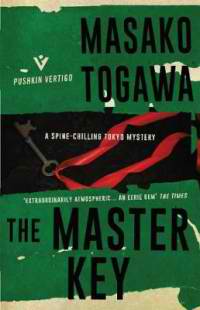Convenience Store Woman by Sayaka Murata
 Wednesday, July 25, 2018 at 7:54AM
Wednesday, July 25, 2018 at 7:54AM 
Published in Japan in 2016; published in translation by Grove Press on June 12, 2018
As a child, Keiko Furukura decided to teach another child some manners by braining him with a shovel, a decision she regarded as perfectly reasonable. She was thereafter viewed as a strange and troublesome child. Realizing that her straightforward approach to life kept getting her into trouble, she learned to mimic the behavior of other kids and to follow instructions, never speaking or acting on her own initiative. The conformist strategy worked for her, as it does for many people.
Convenience Store Woman follows Keiko’s life from college, when she takes a part-time job in a Smile Mart, until Keiko is in her late 30s. The convenience store job suits her because a convenience store “is a forcibly normalized environment where foreign matter is immediately eliminated.” In other words, conform or leave. Keiko adapts perfectly to the convenience store lifestyle, faithfully following her trainer’s instructions about shouting greetings to customers, looking them in the eye, smiling, asking if they want anything else, bagging purchases and making change. Thanks to the scripted work and clear expectations, Keiko finally feels comfortable interacting with others. It is her first time as “a normal cog in society.” She is so happy that she is still working there eighteen years later.
Keiko draws her malleable personality from her co-workers, taking a bit from each one until she has amalgamized a personality of her own, albeit one that changes as a function of employee turnover. She believes she has been “infected” by their speech patterns and vocabulary, causing her own speech patterns and word choices to change as new co-workers replace the old ones. Even her gestures change as she absorbs the behavior of new workers. Keiko has no desire to look for a better job because this job has allowed her to master the art of pretending to be a person.
The story has several themes. One is socially-enforced normalization. Being a convenience store worker is fine for a college student, but as time goes on, Keiko doesn’t fit in with society’s expectations because she lacks the ambition to find a better job or to pursue marriage. On the few occasions she socializes, she is ostracized or criticized because she doesn’t fit society’s vision of how a maturing woman should live her life. Living a fiction of normalcy isn’t easy, particularly for a woman; to justify her low-end job as a middle-age woman, Keiko contrives excuses and finds a relationship partner, even if the platonic and rather unpleasant relationship is one of convenience.
The culture of gossip is another theme. Keiko is happiest when she is talking with co-workers about essential convenience store issues, like whether the store can make its sales goal for deep-fried chicken skewers. When co-workers realize Keio is having contact with a fired worker in her free time, they can’t stop grilling her about her relationship. They also feel compelled to lecture the ex-worker and Keiko about their respective failings. In Japan as everywhere, people want to meddle when they should mind their own damn business.
Perhaps the overriding theme is the importance of being true to one’s nature, regardless of society’s expectations. Keiko’s sister is distressed about having to cope with the fact that Keiko is not “normal,” but Keiko is content just the way she is. Her life has definition. The convenience store speaks to her in a voice that only she can hear. She knows exactly what the convenience store needs. Being a convenience store worker makes her happy, while the prospect of looking for a better job or getting married and having sex are antithetical to Keiko’s ability to live a fulfilling life.
That, I think, is the great lesson of Convenience Store Woman: when someone is happy and content to live in a way that doesn’t harm others, whether the person has a “normal” life isn’t the business of anyone else. Being happy and harmless is just fine, and trying to change a person who isn't hurting anyone because they don't "fit in" is an act of cruelty. Convenience Store Woman teaches that profound lesson in an allegorical story that is both appealing and deceptive in its simplicity.
RECOMMENDED
 TChris |
TChris |  Post a Comment |
Post a Comment |  Japan,
Japan,  Sayaka Murata in
Sayaka Murata in  General Fiction
General Fiction 


